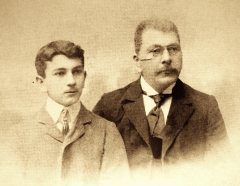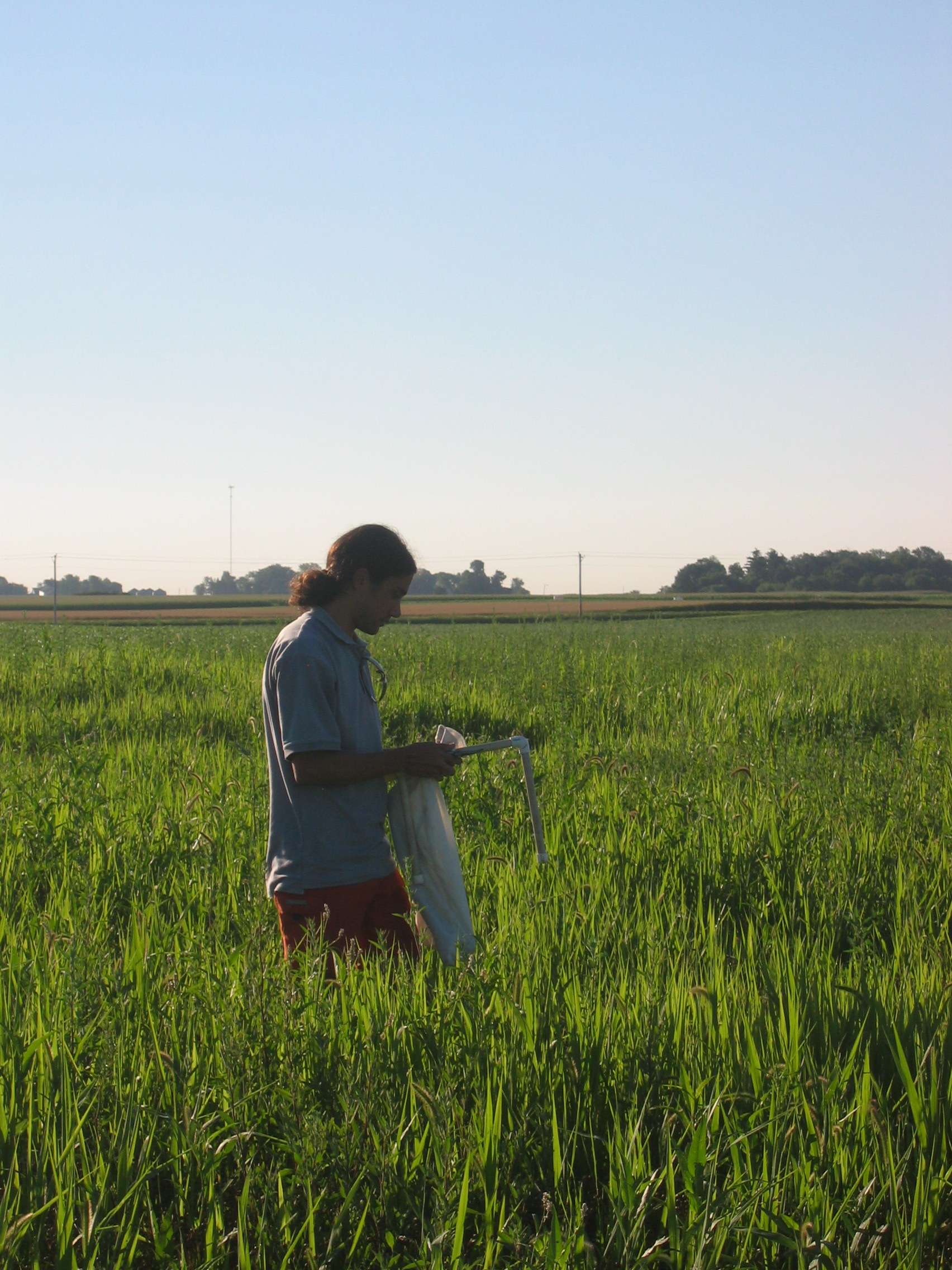|
Armen Takhtajan
Armen Leonovich Takhtajan or Takhtajian ( hy, Արմեն Լևոնի Թախտաջյան; russian: Армен Леонович Тахтаджян; surname also transliterated Takhtadjan, Takhtadzhi︠a︡n or Takhtadzhian, pronounced takh-tuh-JAHN; 10 June 1910 – 13 November 2009), was a Soviet- Armenian botanist, one of the most important figures in 20th century plant evolution and systematics and biogeography. His other interests included morphology of flowering plants, paleobotany, and the flora of the Caucasus. He was one of the most influential taxonomists of the latter twentieth century. Life Family Takhtajan was born in Shushi, Russian Empire, present-day disputed Nagorno-Karabakh, on 10 June 1910, to a family of Armenian intellectuals. His grandfather Meliksan Takhtadzhyan Petrovich had been born in Trabzon, Ottoman Empire and was educated in Italy, on the island of San Lazzaro degli Armeni, an Armenian enclave, spoke many languages and worked as a journ ... [...More Info...] [...Related Items...] OR: [Wikipedia] [Google] [Baidu] |
Republic Of Artsakh
Artsakh, officially the Republic of Artsakh () or the Nagorno-Karabakh Republic (),, is a breakaway state in the South Caucasus whose territory is internationally recognised as part of Azerbaijan. Artsakh controls a part of the former Nagorno-Karabakh Autonomous Oblast, including the capital of Stepanakert. It is an enclave within Azerbaijan. Its only overland access route to Armenia is via the wide Lachin corridor which is under the control of Russian peacekeepers. The predominantly Armenian-populated region of Nagorno-Karabakh was claimed by both the Azerbaijan Democratic Republic and the First Republic of Armenia when both countries became independent in 1918 after the fall of the Russian Empire, and a brief war over the region broke out in 1920. The dispute was largely shelved after the Soviet Union established control over the area, and created the Nagorno-Karabakh Autonomous Oblast (NKAO) within the Azerbaijan SSR in 1923. In the leadup to the fall of the ... [...More Info...] [...Related Items...] OR: [Wikipedia] [Google] [Baidu] |
Morphology (biology)
Morphology is a branch of biology dealing with the study of the form and structure of organisms and their specific structural features. This includes aspects of the outward appearance ( shape, structure, colour, pattern, size), i.e. external morphology (or eidonomy), as well as the form and structure of the internal parts like bones and organs, i.e. internal morphology (or anatomy). This is in contrast to physiology, which deals primarily with function. Morphology is a branch of life science dealing with the study of gross structure of an organism or taxon and its component parts. History The etymology of the word "morphology" is from the Ancient Greek (), meaning "form", and (), meaning "word, study, research". While the concept of form in biology, opposed to function, dates back to Aristotle (see Aristotle's biology), the field of morphology was developed by Johann Wolfgang von Goethe (1790) and independently by the German anatomist and physiologist Karl Fr ... [...More Info...] [...Related Items...] OR: [Wikipedia] [Google] [Baidu] |
Leipzig University
Leipzig University (german: Universität Leipzig), in Leipzig in Saxony, Germany, is one of the world's oldest universities and the second-oldest university (by consecutive years of existence) in Germany. The university was founded on 2 December 1409 by Frederick I, Elector of Saxony and his brother William II, Margrave of Meissen, and originally comprised the four scholastic faculties. Since its inception, the university has engaged in teaching and research for over 600 years without interruption. Famous alumni include Gottfried Wilhelm von Leibniz, Johann Wolfgang von Goethe, Leopold von Ranke, Friedrich Nietzsche, Robert Schumann, Richard Wagner, Tycho Brahe, Georgius Agricola, Angela Merkel and ten Nobel laureates associated with the university. History Founding and development until 1900 The university was modelled on the University of Prague, from which the German-speaking faculty members withdrew to Leipzig after the Jan Hus crisis and the Decree of ... [...More Info...] [...Related Items...] OR: [Wikipedia] [Google] [Baidu] |
Agronomist
An agriculturist, agriculturalist, agrologist, or agronomist (abbreviated as agr.), is a professional in the science, practice, and management of agriculture and agribusiness. It is a regulated profession in Canada, India, the Philippines, the United States, and the European Union. Other names used to designate the profession include agricultural scientist, agricultural manager, agricultural planner, agriculture researcher, or agriculture policy maker. The primary role of agriculturists are in leading agricultural projects and programs, usually in agribusiness planning or research for the benefit of farms, food, and agribusiness related organizations. Agriculturists usually are designated in the government as public agriculturists serving as agriculture policy makers or technical advisors for policy making. Agriculturists can also provide technical advice for farmers and farm workers such as in making crop calendars and work flows to optimize farm production, tracing agricult ... [...More Info...] [...Related Items...] OR: [Wikipedia] [Google] [Baidu] |
Georgia (country)
Georgia (, ; ) is a transcontinental country at the intersection of Eastern Europe and Western Asia. It is part of the Caucasus region, bounded by the Black Sea to the west, by Russia to the north and northeast, by Turkey to the southwest, by Armenia to the south, and by Azerbaijan to the southeast. The country covers an area of , and has a population of 3.7 million people. Tbilisi is its capital as well as its largest city, home to roughly a third of the Georgian population. During the classical era, several independent kingdoms became established in what is now Georgia, such as Colchis and Iberia. In the early 4th century, ethnic Georgians officially adopted Christianity, which contributed to the spiritual and political unification of the early Georgian states. In the Middle Ages, the unified Kingdom of Georgia emerged and reached its Golden Age during the reign of King David IV and Queen Tamar in the 12th and early 13th centuries. Thereafter, the ... [...More Info...] [...Related Items...] OR: [Wikipedia] [Google] [Baidu] |
Batumi
Batumi (; ka, ბათუმი ) is the List of cities and towns in Georgia (country), second largest city of Georgia (country), Georgia and the capital of the Autonomous Republic of Adjara, located on the coast of the Black Sea in Georgia's southwest. It is situated in a subtropical zone at the foot of the Caucasus Mountains, Caucasus. Much of Batumi's economy revolves around tourism and gambling (it is nicknamed "The Las Vegas of the Black Sea"), but the city is also an Batumi Seaport, important seaport and includes industries like shipbuilding, food processing and light manufacturing. Since 2010, Batumi has been transformed by the construction of modern high-rise buildings, as well as the restoration of classical 19th-century edifices lining its historic Old Town. History Early history Batumi is located on the site of the ancient Greece, ancient Greek colony in Colchis called "''Bathus"'' or "''Bathys"'', derived from ( grc-gre, βαθύς λιμεν, ; or , ; literal tr ... [...More Info...] [...Related Items...] OR: [Wikipedia] [Google] [Baidu] |
Enclave
An enclave is a territory (or a small territory apart of a larger one) that is entirely surrounded by the territory of one other state or entity. Enclaves may also exist within territorial waters. ''Enclave'' is sometimes used improperly to denote a territory that is only partly surrounded by another state. The Vatican City and San Marino, both enclaved by Italy, and Lesotho, enclaved by South Africa, are completely enclaved sovereign states. An exclave is a portion of a state or district geographically separated from the main part by surrounding alien territory (of one or more states or districts etc). Many exclaves are also enclaves, but not all: an exclave can be surrounded by the territory of more than one state. The Azerbaijani exclave of Nakhchivan is an example of an exclave that is not an enclave, as it borders Armenia, Turkey and Iran. Semi-enclaves and semi-exclaves are areas that, except for possessing an unsurrounded sea border (a coastline contiguous with interna ... [...More Info...] [...Related Items...] OR: [Wikipedia] [Google] [Baidu] |
San Lazzaro Degli Armeni
San Lazzaro degli Armeni (, "Saint Lazarus of the Armenians"; called Saint Lazarus Island in English sources; hy, Սուրբ Ղազար, Surb Ghazar) is a small island in the Venetian Lagoon which has been home to the monastery of the Mekhitarists, an Armenian Catholic congregation, since 1717. It is one of the two primary centers of the congregation, along with the Mekhitarist Monastery of Vienna. The islet lies to the southeast of Venice proper and west of the Lido and covers an area of . Settled in the 9th century, it was a leper colony during the Middle Ages, but fell into disuse by the early 18th century. In 1717 San Lazzaro was ceded by the Republic of Venice to Mkhitar Sebastatsi, an Armenian Catholic monk, who established a monastery with his followers. It has since been the headquarters of the Mekhitarists and, as such, one of the world's prominent centers of Armenian culture and Armenian studies. Numerous important publications, such as the first complete diction ... [...More Info...] [...Related Items...] OR: [Wikipedia] [Google] [Baidu] |
Trabzon
Trabzon (; Ancient Greek: Tραπεζοῦς (''Trapezous''), Ophitic Pontic Greek: Τραπεζούντα (''Trapezounta''); Georgian: ტრაპიზონი (''Trapizoni'')), historically known as Trebizond in English, is a city on the Black Sea coast of northeastern Turkey and the capital of Trabzon Province. Trabzon, located on the historical Silk Road, became a melting pot of religions, languages and culture for centuries and a trade gateway to Persia in the southeast and the Caucasus to the northeast. The Venetian and Genoese merchants paid visits to Trabzon during the medieval period and sold silk, linen and woolen fabric. Both republics had merchant colonies within the city – Leonkastron and the former "Venetian castle" – that played a role to Trabzon similar to the one Galata played to Constantinople (modern Istanbul). Trabzon formed the basis of several states in its long history and was the capital city of the Empire of Trebizond between 1204 and 1461. ... [...More Info...] [...Related Items...] OR: [Wikipedia] [Google] [Baidu] |
Shushi
/ hy, Շուշի , settlement_type = City , image_skyline = ShushaCollection2021.jpg , image_caption = Landmarks of Shusha, from top left: Ghazanchetsots Cathedral • Yukhari Govhar Agha Mosque Shusha fortress • Shusha mountains House of Mehmandarovs • City centerShusha skyline • House of Khurshidbanu Natavan , pushpin_map = Azerbaijan#Republic of Artsakh , coordinates = , subdivision_type = Country , subdivision_name = Azerbaijan Republic of Artsakh (claimed) , subdivision_type1 = District (Azerbaijan) , subdivision_name1 = Shusha , subdivision_type2 = Province (Artsakh, claimed) , subdivision_name2 = Shushi , established_title = Founded , leader_title1 = Mayor , leader_name1 = Bayram Safarov , leader_ti ... [...More Info...] [...Related Items...] OR: [Wikipedia] [Google] [Baidu] |
Taxonomists
In biology, taxonomy () is the scientific study of naming, defining ( circumscribing) and classifying groups of biological organisms based on shared characteristics. Organisms are grouped into taxa (singular: taxon) and these groups are given a taxonomic rank; groups of a given rank can be aggregated to form a more inclusive group of higher rank, thus creating a taxonomic hierarchy. The principal ranks in modern use are domain, kingdom, phylum (''division'' is sometimes used in botany in place of ''phylum''), class, order, family, genus, and species. The Swedish botanist Carl Linnaeus is regarded as the founder of the current system of taxonomy, as he developed a ranked system known as Linnaean taxonomy for categorizing organisms and binomial nomenclature for naming organisms. With advances in the theory, data and analytical technology of biological systematics, the Linnaean system has transformed into a system of modern biological classification intended to reflect the evol ... [...More Info...] [...Related Items...] OR: [Wikipedia] [Google] [Baidu] |








